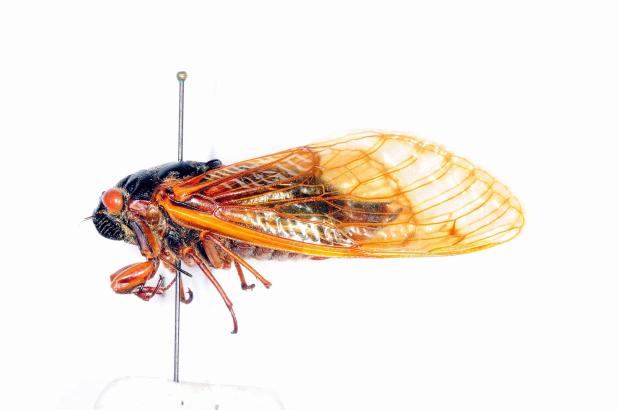
Cicadas primed for rare double emergence
For the first time since 1803, two broods of periodical cicadas — one that appears every 17 years and another that emerges every 13 years — will come from the ground simultaneously in the United States this spring and summer.
The 13-year brood, identified as Brood XIX and nicknamed the Great Southern Brood, ranges across the southeastern U.S. and has historically appeared in a few of Louisiana’s northern parishes. Yet in 2011, the last year the cicada brood emerged, there were no sightings recorded in Louisiana, according to LSU AgCenter researchers. The brood may be extinct in the state.
Emergence areas of the cicadas can be as small as an acre or less, said Christopher Carlton, an entomology diagnostician with the LSU AgCenter. Any disturbance to forests during the cicadas’ 13 years underground, such as a timber harvest or residential development, can “exterminate these localized populations,” he said.
“Once they are gone, they never recover,” Carlton said.
Citizen scientists can help document the periodic cicadas’ appearance by photographing them and uploading photos to iNaturalist.org, a social networking site that helps map biodiversity worldwide. All periodical cicadas are black and have red eyes and orange stripes on their wings, Carlton said, and in the past, they have been seen in Caddo, Claiborne and Webster parishes.
Historical records for the presence of Brood XIX in Louisiana date back to the early 1900s, but record keeping is incomplete, Carlton said. Before the internet, there were no easy ways to record and share the sightings.
“We have an opportunity now to document whether the brood still exists where the historical records indicated across the northern tier of parishes and in the northeast as far south as Natchez, Mississippi,” Carlton said.
In 2027, another 13-year brood, Brood XXII, which some scientists have named the Lower Mississippian Brood, will emerge around Baton Rouge.
Researchers at the University of Connecticut predict that trillions of cicadas will rise above ground across the United States this summer. The other brood of 17-year periodical cicadas, Brood XIII, will appear in Iowa, Wisconsin, Illinois and possibly in Michigan.
Annual cicadas appear in Louisiana every summer. They typically have a one- or two-year life cycle, said Aaron Ashbrook, an assistant professor of urban entomology at the LSU AgCenter.
“They just emerge every year because they have an asynchronous emergence pattern,” Ashbrook said. “The annual part is just referring to the fact that we encounter them every year.”
Cicadas spend most of their lives underground. In the nymphal stage, they use their sucking mouth parts to feed on sap from tree roots, Ashbrook said. While they prefer the sap of oaks, maples, ash and other hardwood trees, they will feed on other tree species. When the ground warms to 64 degrees Fahrenheit at an 8-inch depth, cicadas will emerge, transform into adults and mate.
“When they climb out, we see their exoskeleton, or their molts, which are commonly found on walls, fences and other outdoor objects,” Ashbrook said. “Once the adults have completed the molting process, we find them up in trees or on the ground, and they don’t live very long as adults, actually.”
After they mate, the females lay eggs in tree branches. When the eggs hatch a few weeks later, the nymphs burrow into the soil and continue the cycle.
Cicadas grow to 1 to 2 inches in size, and they pose no threat to people. The loud buzzing produced by males is made through a special organ called a tymbal, not by using their wings like crickets or grasshoppers, Ashbrook said.
“As far as the sound, it does not reach a level that can damage your ears,” he said. “However, it does reach a level that can disrupt activity or be somewhat annoying or disturb your concentration.”
During their short lives above ground, cicadas become a food source for reptiles, birds and other insects. A specialized wasp, the eastern cicada killer, feeds exclusively on cicadas. These large wasps sting cicadas, bring them to their burrows, and feed the cicadas to their young.
Some human foragers feast on newly emerged cicadas as well.
“I’ve never tried them,” Ashbrook said, “but they are supposed to be sweet and be somewhat like shrimp in flavor.”
